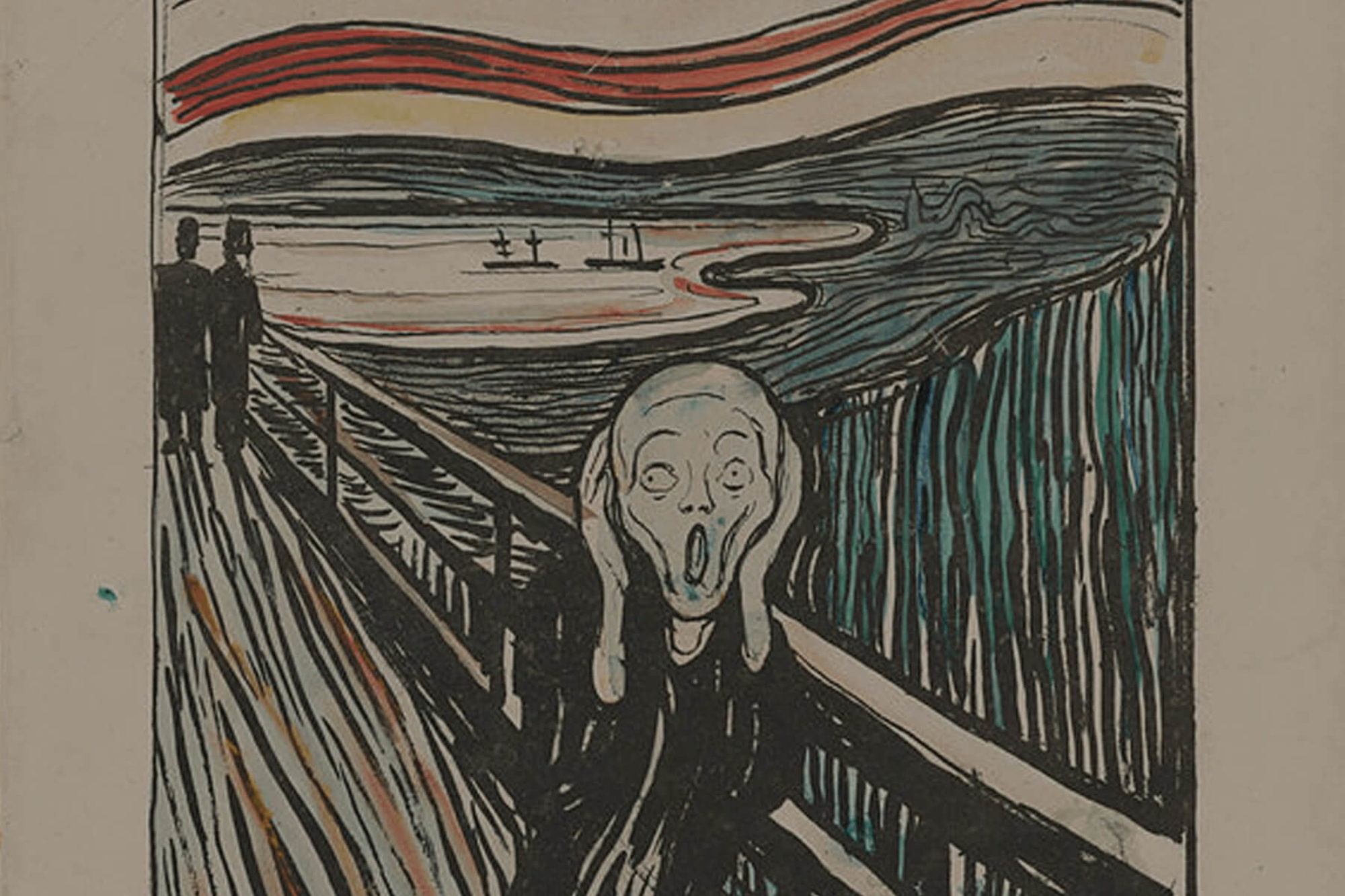Digital Catapult, MUNCH and Arcade – mixing art with augmented reality
Posted 9 Jun 2020
Digital Catapult, the UK’s leading advanced digital technology innovation centre, and MUNCH, Oslo are collaborating with immersive technology specialists Arcade to create a prototype augmented reality (AR) crowd-sourced immersive experience inspired by Norway’s greatest artist, Edvard Munch, and his approach to art, to inspire children to get creative.
Using cutting edge augmented reality technology, students aged between 9 and 11 will be able to capture their own original artwork via the app, and then place their image, through AR, into the physical world in a location or environment that has meaning for the student or is related to the artwork itself.
Famous for works such as The Scream, Vampire and The Frieze of Life series, Munch was one of the most innovative, influential and prolific artists of his day, although his work was often criticised and disliked. Known mainly for his paintings, Munch used many different mediums to create his work ranging from woodcuts and etchings to photography. Frequently inspired by his location, from the rugged coastlines of Norway to the cities of Paris, Berlin and Oslo, the physical environment was important for him and is frequently the subject of his work.
The experience is therefore built around the idea of place and is primarily targeted to inspire school children across Norway as part of the museum’s ongoing work to bring Munch’s art and philosophy into primary and secondary schools.
The experience will inspire students to engage with Edvard Munch’s body of work, as well as his unique way of thinking and creating, to understand who the artist was and how he created. The app will amalgamate all of the AR art into a searchable geo-located map, allowing users and contributors to interact with each other’s artworks throughout Norway, exploring different creative methods and eventually creating an augmented reality, crowd-sourced, nationwide piece of art.
Jeremy Silver, CEO, Digital Catapult said: “The Scream was probably the first world famous artwork also to become an emoji. This project addresses the challenges of how to bring a wider sense of Edvard Munch’s work and ideas directly to audiences and to do so outside of the traditional bounds of a museum space; that has become even more meaningful during the course of the project. We’re thrilled to be working with MUNCH and one of the UK’s leading creative mixed reality studios, Arcade, and we look forward to seeing the wider impact of this cutting-edge collaboration.”
Gerd-Elise Mørland, Director of Learning at MUNCH said: “The project is proving to be a grand testament to translating elements of Munch’s persona and artistry into a medium relevant for the young of today. It’s been important for us to create an art experience, not an educational tool. Through focusing on individual creative processes and the combination of analogue and digital elements we are able to get the best of both worlds. Kids today are more technically savvy than ever, and we want to address this development by creating an experience that allows its young users to explore creative expression with methods familiar to their digital lives. We are so grateful for the opportunity to collaborate with both Digital Catapult and Arcade on this inspiring project, which is generously supported by Sparebankstiftelsen DNB, Norway. Hopefully, the collaboration will result in an engagement for kids, relevant beyond the realms of school, allowing influence from users’ own daily surroundings wherever they might be geographically located across our far-reaching country.”
Alex Book, Chief Strategy Officer at Arcade, said: “During our research for this incredible project we discovered that Arcade shares one of Edvard Munch’s core philosophies, of using creativity to connect people to place. Our mediums may differ, but that link was just one reason that we were so thrilled to partner with MUNCH and Digital Catapult to bring this idea to life. Munch’s work was famously attacked for its apparently careless, incomplete appearance, but this became the very quality for which he is most celebrated. The message for young people today, growing up under greater social pressure than perhaps any generation before, is so clear. Because like Munch’s work, they too are ‘unfinished’, and our goal is to create an experience that inspires them to thrive as artists, but also as human beings.”
Digital Catapult’s deep connections across the UK immersive and wider cross-technology innovation communities provided MUNCH with access to the UK market, and the museum was keen to tap into the strengths of the UK ecosystem for this project. Digital Catapult worked with the museum to define the scope of the project, bringing immersive industry specialists Arcade in to create the augmented reality experience.
The app is currently being user-tested with groups of students in Norway and development work will continue over the summer. The new museum is planned to open in autumn 2020 with the app ready for download for pilot-groups around the same time.
Find out more about MUNCH here, about Digital Catapult’s work with immersive technology here, and more about Arcade here. The project is generously supported by Sparebankstiftelsen DNB.